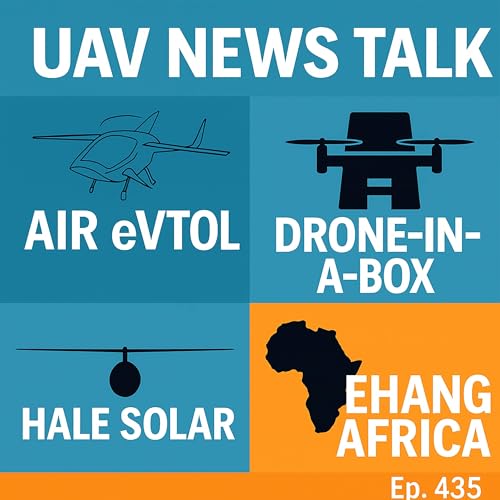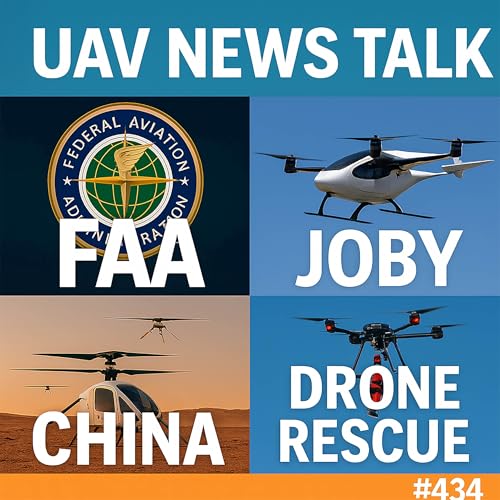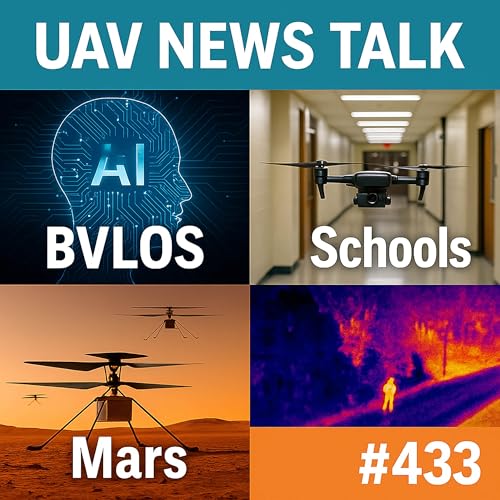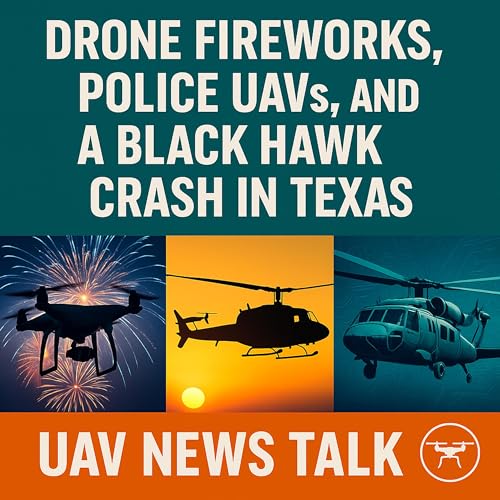Max talks with David Vanderhoof in Episode 435 of UAV News Talk about an especially busy week in drone, eVTOL, and military UAV news. The episode covers new FAA certifications, autonomous launch systems, solar-powered endurance flights, Chinese technology in Africa, U.S. counter-drone readiness, and even a domestic security case involving explosives and drones. Together, these stories paint a vivid picture of how fast the unmanned aviation sector is evolving — and where the biggest opportunities and threats lie.
AIR eVTOL gains FAA Experimental CertificateThe first headline is the Israeli company AIR receiving an FAA experimental airworthiness certificate for its AIR One eVTOL. This isn’t the final approval needed for commercial operations, but it marks a critical milestone. The certificate allows AIR to expand its flight envelope testing in Florida — flying higher, faster, and with more maneuvering limits than before. Max explains that with this certificate, companies can begin validating systems under real-world conditions and build marketing buzz through legitimate flight footage.
However, limitations remain: only essential crew can be onboard. No journalists, investors, or passengers are allowed until type certification and a production certificate are granted. David points out discrepancies in reported pre-orders — one source cites 150, another 2,500 — and the hosts remind listeners that early order numbers in this industry often need to be taken with caution.
Max ties the discussion to the FAA’s MOSAIC rules for light-sport aircraft, which broaden certification pathways. These rules may make it easier for eVTOL manufacturers like AIR to secure final certification. For UAV enthusiasts and future pilots, this means the barriers to entry are slowly lowering, even if the process is still measured in years rather than months.
Germany’s “Drone-in-a-Box”The second story introduces a “drone in a box” platform from Germany’s Skycar. This portable autonomous launch and recovery system can be mounted on trucks, ships, or rigid-hulled inflatable boats. Inside the box: a drone, charging system, and comms suite. Two models are supported, including the R70 SkyRanger, which can fly at up to 100 km/h.
Max and David highlight how this technology, initially aimed at military markets, could quickly spill into commercial applications. Imagine delivery companies like UPS or Amazon mounting these on vehicles, enabling drones to launch, deliver, and recharge without human intervention. First responders could also benefit, deploying drones at wildfire scenes, active shooter incidents, or rescue operations. Even lifeguards or cruise ships might one day use such systems for rapid deployment of flotation devices or surveillance.
The takeaway is that “drone in a box” technology represents a turnkey UAV ecosystem — plug it into any vehicle, and suddenly it’s drone-enabled.
HALE Solar UAV Achieves 73-Hour FlightNext, the hosts discuss the U.S. Navy and SkyDweller Aero’s successful high-altitude long-endurance (HALE) UAV test at Patuxent River Naval Air Station. Powered by solar energy, the UAV stayed aloft for more than 73 continuous hours. Max compares this to Solar Impulse’s world-circumnavigation, noting that daytime solar climbs and nighttime battery descents make...
 24 Min.
24 Min. Oct 25 202529 Min.
Oct 25 202529 Min. 31 Min.
31 Min. 26 Min.
26 Min. Aug 10 202528 Min.
Aug 10 202528 Min. 29 Min.
29 Min. 45 Min.
45 Min. 29 Min.
29 Min.

